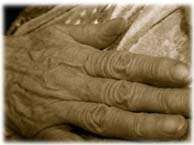 Survival
in Canada as an artist depends very much on discipline,
focus and versatility. Milne excels in all areas. Following her rigorous
art school training and involvement with professional artists, such as Ivan
Mestrovic, Sylvia Daoust and John Farleigh, Milne was able to embark on
a solo career as an artist.
Survival
in Canada as an artist depends very much on discipline,
focus and versatility. Milne excels in all areas. Following her rigorous
art school training and involvement with professional artists, such as Ivan
Mestrovic, Sylvia Daoust and John Farleigh, Milne was able to embark on
a solo career as an artist.
In a 1957 interview in the Ottawa Journal, Milne expressed great optimism for making a living as an artist in Canada, praising Canadians for their support and encouragement of art by relatively unknown artists. She had a number of successful exhibitions and kept busy with commissions, but when her sister came forward with the posting for the job of Dominion Sculptor, Milne found herself enticed by the rare combination offered in the position—artistic freedom and a steady civil service salary.
 Milne's
multidisciplinary talents, humility and work
ethic won her the job. In 1962, an annual salary of approximately $7,000
was granted, increasing to $30,000 by 1977, and $52,000 by 1987. Milne
felt that her team of carvers and assistants were underpaid for their
efforts. Despite this, the opportunity to work professionally as stonecarvers
kept many of her employees on her staff for years.
Milne's
multidisciplinary talents, humility and work
ethic won her the job. In 1962, an annual salary of approximately $7,000
was granted, increasing to $30,000 by 1977, and $52,000 by 1987. Milne
felt that her team of carvers and assistants were underpaid for their
efforts. Despite this, the opportunity to work professionally as stonecarvers
kept many of her employees on her staff for years.
By 1977, Milne's optimism about artistic survival had waned with her observation of the difficulty of surviving on art alone without outside work, such as teaching. More recently Milne expressed her dissatisfaction with society's view of artwork as a commodity which devalues art's intangible qualities, such as spirituality. "If people continue to think of art as money, young artists will struggle and many great talents will be lost." Even with this view, Milne now maintains some real hope for Canada's artists; her positive outlook may be the result of a successful lifetime of art production.